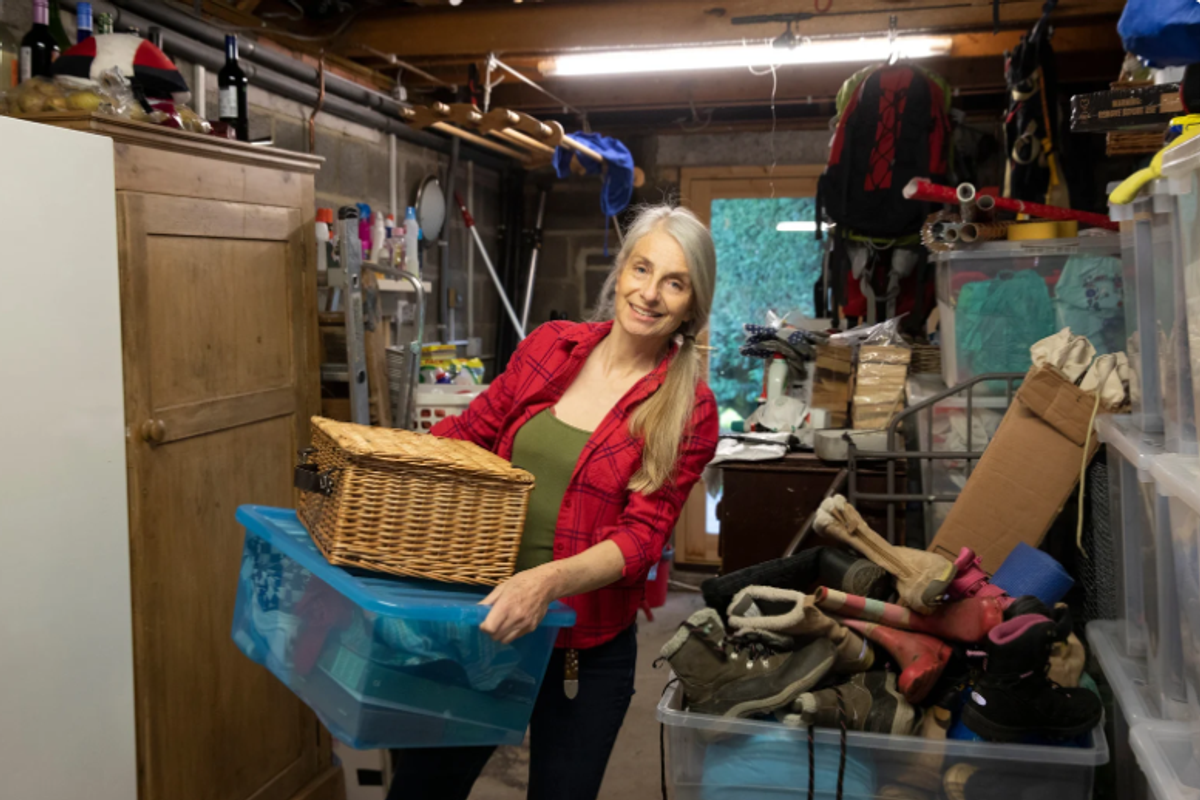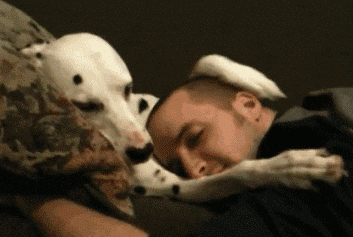7 new breeds have just become eligible to compete at the Westminster dog show.
The dogs are unique and adorable, but is all of this OK?
The Westminster Kennel Club dog show is a 140-year-old annual competition that draws in over 3,000 dogs from all 50 states.
Photo by Andrew Burton/Getty Images.
Held at Madison Square Garden in New York, it's a competition to essentially compare various dogs against their "breed standards," measuring and quantifying things like eye shape, tail carriage, and color.
They are also judged on merits of companionship as well as agility (a category added in 2014), and obedience (a category added this year).
If all that sounds a little weird and questionable to you, well you're not alone. The Westminster dog show is not without controversy.
Organizations like PETA have spoken out against the show and its practices, which, they argue, can be unnatural and harmful to dogs.
But still, the show goes on.
This year, seven new dog breeds have become eligible to compete.
The seven new eligible dog breeds in 2016. Photo by Eduardo Muno Alvarez/AFP/Getty Images.
According to officials, that's the most breeds to have been added to the competition since 2000.
Before you see them prancing down the felt runway on Feb. 16, you can get a first look here:
1. The Spanish Water Dog
Photo by Jamie McCarthy/Getty Images.
Originally bred in Spain, they were versatile farm dogs herding sheep and goats and also acting as loyal companions to farmers and fishermen and women. They excel in training because of their loyalty and eagerness to please.
2. The Miniature American Shepherd
Photo by Jaime McCarthy/Getty Images.
Bred in the American west in the 1960s, the miniature American shepherd is a highly active farm dog. It comes in several different colors and is incredibly versatile.
3. The Lagotto Romagnolo
Photo by Jaime McCarthy/Getty Images.
This curly guy is the world's foremost truffle hunter. Which means exactly what you think it means. The breed has a storied career searching through forests to find delicious (and expensive) truffles deep underground. Its curly coat keeps it warm in the winter and protects it from thorns and brambles.
4. The Cirneco dell'Etna
Photo by Jaime McCarthy/Getty Images.
This Anubis lookalike is affectionate, friendly, and an amazing hunter of small mammals. Its short hair makes grooming minimal and it's an excellent family dog.
5. The Boerboel
Photo by Jaime McCarthy/Getty Images.
Originally developed in South Africa, these bruisers are reliable, intelligent, and strong watchdogs. They're protective, fearless, and reasonably social — though not the dog for everyone.
6. The Berger Picard
Photo by Jaime McCarthy/Getty Images.
Star of the film "Because of Winn Dixie," this medium-sized pup is perfect for families, as it is people oriented and loyal. According to Westminster officials, it's one of the oldest French herding breeds.
7. And, finally, the Bergamasco
Photo by Jaime McCarthy/Getty Images.
This unmistakable sheepdog is an ancient breed from the Italian Alps. Its unique dreadlock-esque coat is hypoallergenic and non-shedding. It's also thick and protective, while still soft to the touch.
All these breeds are unique, beautiful, and charming. But here's the thing...
The language used to describe these new Westminster eligible breeds is a little off-putting, to say the least. Learning about where dogs were "developed" or "invented," or what colors they "come in," or what they can be best used for: it feels like you're reading about used cars or iPhones — not living animals.
Some critics of dog breeding take it a step further. PETA routinely protests the dog show, arguing that the propagation and celebration of purebred dogs adds to the millions of dogs who die in shelters every year. Many more have argued that professional breeding leads to the deaths of shelter dogs and contributes to the staggering pet overpopulation problem.
A protester who interrupted 2010's Westminster dog show with a sign that read "Mutts Rule." Photo via nyatheart/YouTube.
And then there are the alleged health problems that come with essentially inventing new animals bred for cuteness or toughness or some specific look. Pugs and bulldogs are often cited as animals that have been bred for their aesthetic qualities but have experienced crippling health defects.
Photo by Matt Cardy/Getty Images.
All this is to say that dog breeding is ... a little weird, when you think about it.
The Westminster dog show claims to love all dogs equally. But it's not hard to see how placing value on one breed over another based on specific physical attributes genetically engineered into it by humans, sometimes to the detriment of the breed's overall health, not to mention proclaiming one breed to be "the best" each year, could be causing problems for all the non-purebred dogs in shelters who need loving homes too.
So whether or not you watch the dog show, take a minute to consider how the dogs in the show are portrayed and treated. There's no doubt their owners love them and, sure, the dogs in the show are probably happy. They're dogs! (And they've been bred that way!)
The important thing to remember is this — if you're looking to get a dog, consider all breeds. Check out your local shelter too. Dogs of every breed need a home, and I can guarantee you'll love them all equally.







 barkpost GIF
barkpost GIF 
 Introverts tend to be good at listening and empathy.
Introverts tend to be good at listening and empathy. A lot of introverts struggle with networking.
A lot of introverts struggle with networking. One-on-one networking is preferable for introverts.
One-on-one networking is preferable for introverts.